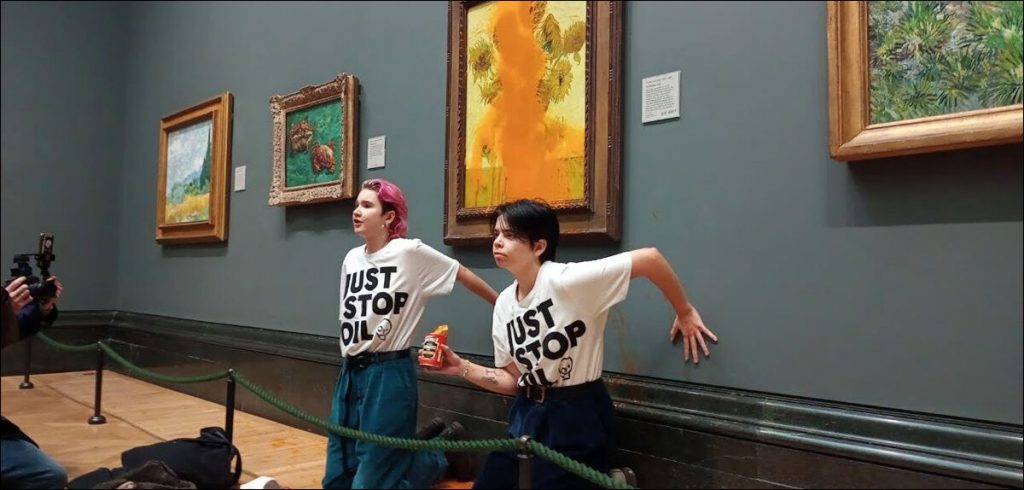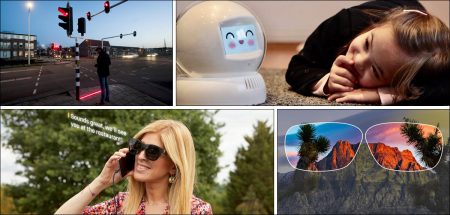Adarsh explores how Artificial Intelligence is playing a part in conserving and restoring historically famous works of art
Major artworks have been in the news lately for all the wrong reasons. Last month, Vincent Van Gogh’s masterpiece ‘Sunflowers’ was vandalized at London’s National Gallery when climate change activists threw tomato soup at the painting.
A few days later, Claude Monet’s ‘Grainstacks’ – valued at $110 million – had mashed potatoes thrown on it by the protestors.
While such deliberate attacks as a sign of protest is nothing new, there are other ways in which famous works of art are under threat. For instance, lots of artworks were stolen or destroyed during World War II.
More recently, cities like Aleppo which are over one thousand years old were destroyed by ISIS in Syria while museums in Iraq and historical sites like the Bamiyan Buddha in Afghanistan have been demolished by the Taliban.
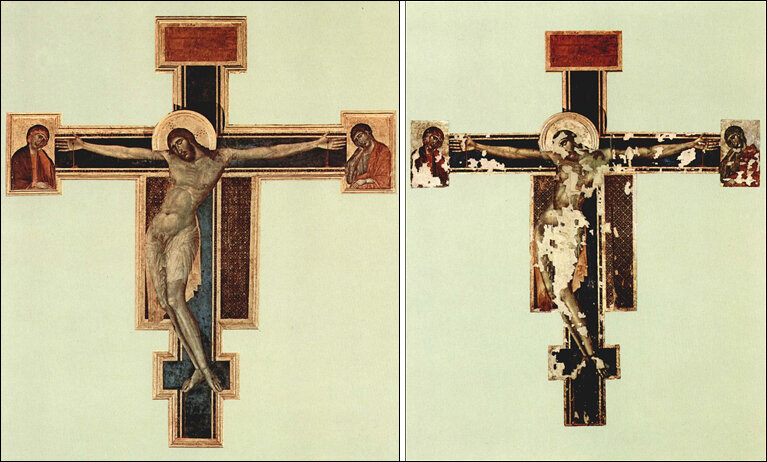
Natural disasters have also robbed us of our cultural heritage. An earthquake in Lisbon in 1755 saw several priceless pieces – including those by Raphael – get destroyed. Similarly, in 1734, a fire in Madrid resulted in many works of art – including those by Leonardo da Vinci – being destroyed.
In recent history, the 2018 fire at the National Museum of Brazil and the 2019 fire at the Notre Dame Cathedral led to further destruction of famous statues, paintings, and sculptures. Pollution and climate change are also putting these works of art at risk. Acid rain is believed to be damaging the Sphinx in Egypt.
Long story short, despite our best efforts, only an exceedingly small fraction of famous works of art manage to survive the test of time. And this is where technology comes in. The onus is on technological innovation to help in preserving and restoring famous works of art.
Artificial Nose to avoid Pollutants
Unlike the human body, artworks are not capable of healing on their own. They are also expected to have an exponentially higher lifespan which means they need a higher level of protection. A major issue with preserving works of art is their constant exposure to air pollutants.
Despite sealing the paintings in airtight frames, they still absorb reactive compounds which slowly lead to severe damage. Sorbent materials are usually used to soak up the pollutants but there is no way of knowing when the sorbents need to be changed. This can also lead to the colours changing or the prints and the canvas decomposing.
To counter this, art preservers have been employing the use of an artificial nose. It was developed by Kenneth Suslick, a researcher at the University of Illinois at Urbana-Champaign, who had invented a pollutant-sniffing nose for biomedical purposes.
The artificial nose combines the technology of electricity and light and is designed to sniff out pollutants in the air before they can irreversibly damage the artwork.
3D Database to protect Artwork
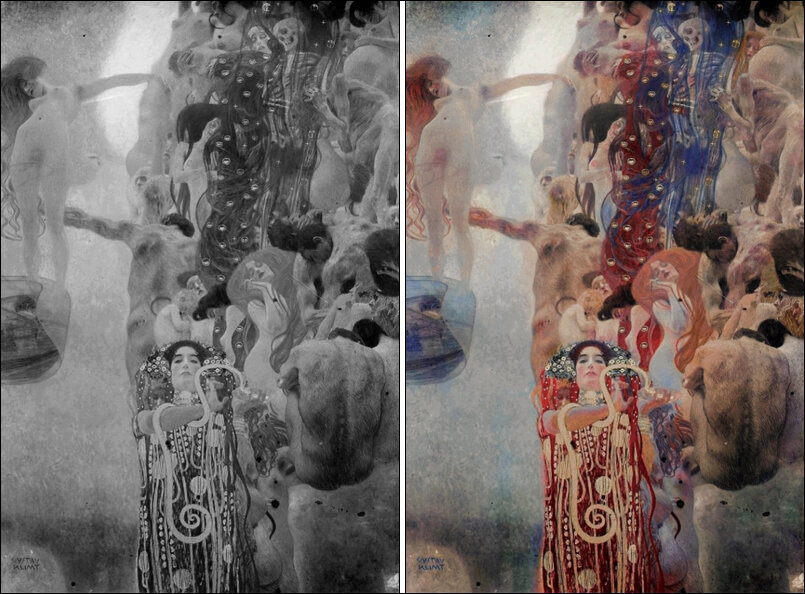
With several artworks and cultural heritage sites threatened by global warfare and terrorist acts, surveyors around the globe are creating 3D databases to preserve these artworks and sites in the digital form.
In Syria, a French 3D digitization agency called Iconem has launched a project called Syrian Heritage to preserve structures that are threatened by war. The Iconem team works with local archaeologists to collect visuals for the database. They use drones to conduct photographic surveys of the area and then use photogrammetry to process and stitch together the stream of photographs to construct 3D versions.
These offer a clear view of the endangered site and allow people to virtually visit and interact with select sections of each site.
The Role of Artificial Intelligence
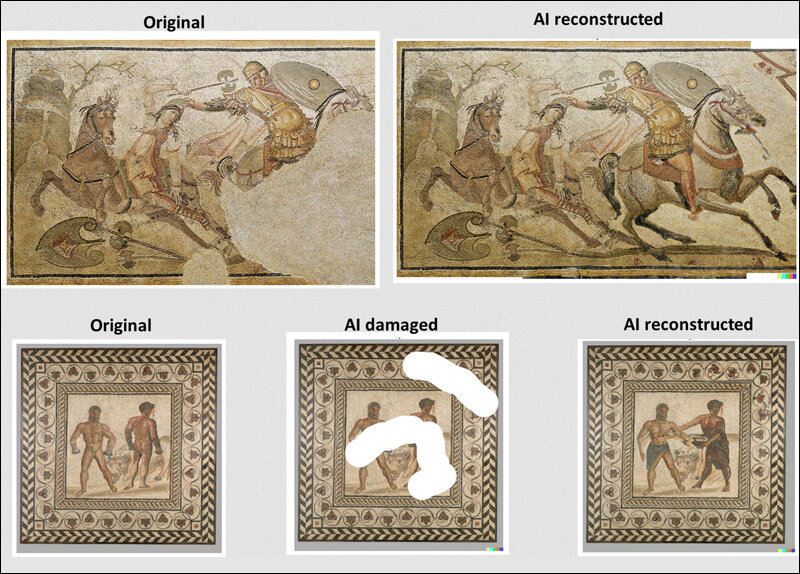
Non-invasive techniques like x-rays can collect valuable data about layers or underdrawings in famous works of art. Artificial intelligence can then use this data to understand patterns. These patterns can be used to restore or recreate images that have been lost forever.
For instance, when Rembrandt’s ‘The Night Watch’ was moved to another location, it was unintentionally shortened. Now researchers have used AI to reconstruct and project what the artwork would have originally looked like. Similarly, three of Gustav Klimt’s paintings that were lost in a 1945 fire in Vienna were recreated with the help of AI.
It created a lot of controversy, but the researchers have always been clear about the fact that they are not trying to replace a work of art but instead are only trying to recreate something that is believed to have been lost forever.
The same technology is used in avoiding counterfeits. By dating and attributing works of art to original masters, replicas are kept away from auction houses as despite the best imitation, superior technology can always tell when a work of art is not genuine.
As mentioned earlier, despite our best efforts, only a fraction of relics from the past makes it to the future. But thanks to technological breakthroughs, we have a better shot at increasing that fraction. And in many cases, it is also helping restore or recreate famous works which were earlier believed to have been lost forever.
In case you missed:
- Top Ten AI in Cinema
- Enemies will have ‘Nowhere to Hide’ with new Chinese Military Tech
- How AI is leading the way for Agritech in India
- Google & Airtel to bring High-Speed Internet to Rural India with Laser Technology
- 10 AI-Powered Apps you should Download now!
- How AI is transforming the Way We Work!
- Top 5 Tech Trends in 2024
- The Pros & Cons of Facial Recognition
- Will AI eat up more IT Jobs in 2024?
- What Passwords are Indians using, how safe are these?



